Secure Your WordPress: Best Practices for a Robust Online Presence
Ensuring the security of your WordPress site is crucial for maintaining a robust online presence. This comprehensive guide outlines the best practices for safeguarding your website, demonstrating the commitment required to protect against threats and vulnerabilities. Adopting these strategies is key to creating a secure, reliable digital environment.
1- Prioritize Secure Login Procedures
Enhancing the security of your WordPress admin area begins with fortified login procedures. Implementing Two-Factor Authentication (2FA), enforcing strong password policies, and limiting login attempts are pivotal steps to deter unauthorized access. These security measures are essential for defending against brute force attacks and safeguarding user credentials.
2- Choose a Secure WordPress Hosting Provider
Choosing the right hosting provider is foundational to your website's security. A good WordPress hosting service offers critical features such as regular backups, malware scanning, active security monitoring, and support for the latest PHP versions. Here are three recommended hosting services known for their strong focus on security:
Pantheon.io: Pantheon stands out for its developer-friendly platform with a strong emphasis on security and performance, offering automated backups, a global CDN, and enterprise-grade security.
WP Engine: WP Engine is a managed WordPress hosting provider known for its robust security features, including daily malware scans, firewalls, and SSL support, ensuring your website is protected against common threats.
SiteGround: SiteGround is renowned for its user-friendly hosting services, providing automated updates, daily backups, and advanced security features such as AI-driven anti-bot systems and SSL certificates for all plans.
Choosing one of these providers can significantly reduce the risk of security breaches, thanks to their specialized WordPress security measures.
3- Regularly Update PHP Version
Keeping the PHP version up to date is crucial for the security and performance of your WordPress site. Updates often include critical security patches and enhancements that reduce vulnerabilities. Routine maintenance to upgrade PHP ensures your website operates efficiently and securely.
4- Implement SSL/HTTPS Across Your Site
Securing data transmission with SSL (Secure Sockets Layer) encryption is non-negotiable for modern websites. SSL certificates, facilitating HTTPS, protect sensitive information and boost your site's SEO rankings. This security measure is fundamental for establishing a trustworthy online presence.
5- Establish Automated Site Backups
Automated backups are a safety net for any website, ensuring data is recoverable in the event of loss or breach. This proactive measure is vital for quick restoration, minimizing downtime and potential data loss. A robust backup solution should be a cornerstone of your site's security strategy.
6- Limit User Access and Permissions
A strategic approach to user management involves limiting access and permissions to essential personnel only. Assigning user roles judiciously reduces the risk of internal threats and accidental data breaches. Effective user permission management is critical for maintaining a secure WordPress environment.
7- Modify the Default Database Prefix
Altering the default database prefix from `wp_` to something unique can significantly enhance your site's defense against SQL injection attacks. This simple yet effective change makes it more difficult for attackers to target your site's database, bolstering your overall security posture.
8- Hide Your WordPress Version
Concealing your WordPress version from public display can mitigate the risk of targeted attacks exploiting known vulnerabilities. Removing or hiding version information is a straightforward but effective tactic in your security arsenal.
Here is a guide on How to hide your WordPress version.
9- Customize the Login URL and Disable File Editing
Changing the default login URL and disabling file editing within the WordPress dashboard are critical steps to prevent unauthorized access and modifications. These practices protect against a range of potential security threats, ensuring your site remains secure against unauthorized changes.
10-Implement Advanced Security Features
Taking security a step further involves disabling unnecessary features like xmlrpc.php, using unique database prefixes, and concealing WordPress version details. These advanced measures provide an additional layer of security, safeguarding your site from sophisticated threats.
Conclusion
Adopting comprehensive security measures is essential for any WordPress site, ensuring it remains safe, reliable, and trustworthy. By implementing these best practices, you can significantly enhance your site's security posture, protecting it from a wide array of threats. A commitment to these strategies is paramount for maintaining a robust online presence in today’s digital landscape.
- WRITTEN BY:Alain Martínez
- POSTED ON:2/9/2024
- TAGS:wordpress wordpress development



